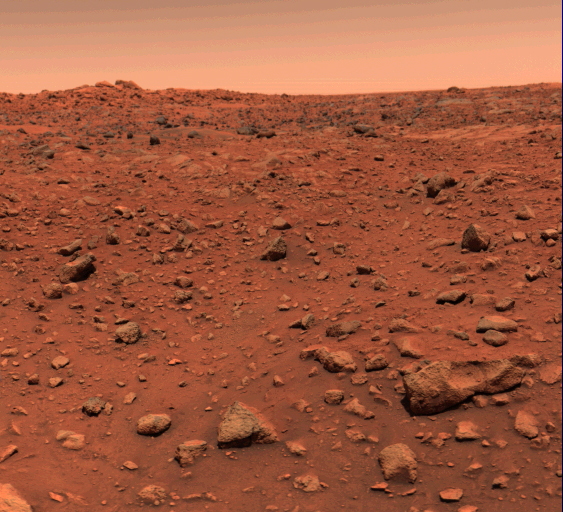
Viking tests for Martian life
The first spacecraft to land on Mars were the American Viking 1 and 2 probes in 1976. Their mission included testing the planet’s soil for life. However, despite promising early test results, life was not found.
The Viking program comprised a pair of American space probes sent to Mars, Viking 1 and Viking 2. Each spacecraft was composed of two main parts: an orbiter designed to photograph the surface of Mars from orbit, and a lander designed to study the planet from the surface. The orbiters also served as communication relays for the landers once they touched down.
It was the most expensive and ambitious mission ever sent to Mars, with a total cost of roughly US$1 billion.[when?] It was highly successful and formed most of the database of information about Mars through the late 1990s and early 2000s.
The Viking program grew from NASA’s earlier, and more ambitious, Voyager Mars program, which was not related to the successful Voyager deep space probes of the late 1970s. Viking 1 was launched on August 20, 1975, and the second craft, Viking 2, was launched on September 9, 1975, both riding atop Titan III-E rockets with Centaur upper stages. Viking 1 entered Mars orbit on June 19, 1976, with Viking 2 following suit on August 7.
After orbiting Mars for more than a month and returning images used for landing site selection, the orbiters and landers detached; the landers then entered the Martian atmosphere and soft-landed at the sites that had been chosen. The Viking 1 lander touched down on the surface of Mars on July 20, 1976, and was joined by the Viking 2 lander on September 3. The orbiters continued imaging and performing other scientific operations from orbit while the landers deployed instruments on the surface.
Read more at Wikipedia
Originally posted 2016-03-21 00:28:10. Republished by Blog Post Promoter

![viking-1[1]](https://coolinterestingnews.com/wp-content/uploads/2012/08/viking-11.jpg)










